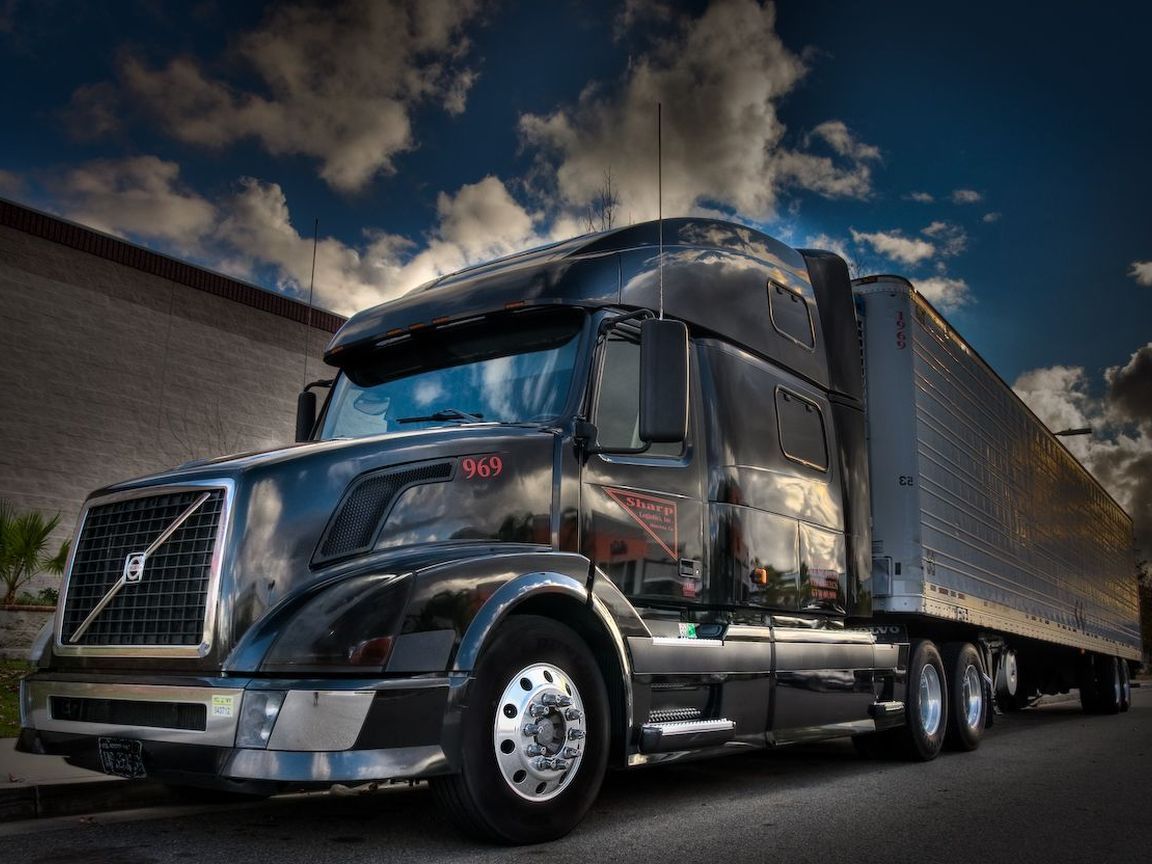Types of Step Deck Trailers
 Mick Lonny
Mick Lonny
There are many different types of trailers that you can use to transport freight. These include flatbed and step deck trailer.
The key difference between these two types of trailers is that step-deck trailers have a lower deck than flatbed trailers. This gives you more room to transport cargo without it exceeding the legal height limit.
Load Capacity
Whether you’re shipping machinery, construction equipment, or tall freight that doesn’t fit on a standard flatbed, step deck trailer are ideal for a wide variety of heavy cargo. They can haul loads up to 10 feet and 2 inches in height, which gives you more room under bridges that would otherwise leave you with cargo too high for a flatbed.
A flatbed is a common type of trailer, and most people know the basics of how to load one. A flatbed is 48 feet long and 58 inches wide, which provides plenty of space for most kinds of freight. However, there are times when a load exceeds this height limit.
Even with a tarp, some commodities will still get damaged by road debris and wind, so it’s important to protect the cargo with crates or other types of packaging before loading. Using a step-deck trailer instead of a flatbed can be beneficial for these types of freight, but you may have to pay more money for the service if your commodity is particularly oversized.
Although some step-deck trailers come with a deployable ramp for driving the freight onto or off of the lower deck, many step-deck trailers are equipped without such a feature. This means that customers will need to provide a ramp for their freight or use their own to ensure the trailer can handle the weight of their shipment.
Depending on the state, you might also need an oversize permit for any loads that exceed 10 feet in height. Getting a permit and paying for an escort or pilot can be very costly, so it’s important to understand the regulations of your state before you begin transporting any freight that requires extra attention.
The overall length of a step-deck trailer ranges from 48 to 53 feet, with the upper deck ranging between 10 and 12 feet in length. Most drivers opt for the 53-foot version, as it allows them more lower deck space.
A typical step-deck trailer can carry loads up to 80,000 pounds in total weight, including the truck, semi-tractor, and empty trailer. In order to maintain compliance with this legal limit, the trailer will need to be set up in a tandem axle configuration. This configuration can support a load that is only slightly over 80,000 pounds, but it will be more difficult to manoeuvre in and out of the bed.
Weight Capacity
When it comes to hauling cargo that is too tall to fit on a flatbed trailer, step-deck trailers are an excellent option. These heavy-duty, low-profile trailers are a great choice for transporting agricultural machinery, construction equipment, and building materials that would not be safe or feasible to haul on a traditional flatbed.
A step-deck trailer can also be used to transport heavy vehicles, such as bulldozers or tractors. The lower platform on a step-deck trailer is closer to the ground by several feet, which can make it easier for drivers to load cargo and stay within legal height restrictions.
In addition to the lowered rear deck, these trailers are also equipped with ramps. These ramps can be flipped down for loading smaller pieces of equipment and folded back up when travelling on the road. This allows truckers to easily load a wide range of equipment, such as excavators and cranes, without worrying about the potential damage that can occur when they have to lift the equipment off the trailer.
Some types of step-deck trailers can be configured with additional options to increase their weight capacity, such as tri-axles. These can add about 5,000–6,000 pounds to the overall hauling capacity of this equipment type, but they require more horsepower and space.
Using multiple load levellers is another way to increase the cargo hauling capacity of this trucking option.This will allow you to load longer and more oversized commodities on a step-deck trailer, which may make it a more cost-effective trucking option for your company.
Likewise, you can use additional racks or trays to help secure the cargo on a step-deck trailer. These extra attachments can help you carry items that are difficult to load or transport, such as steel coils.
Aside from the above, it is important to remember that the size and dimensions of the load you plan on hauling will have a big impact on its overall weight. For example, loads that are too large or tall will require a permit and an escorting vehicle to transport them, which can increase the costs of shipping your freight.
Height Capacity
A step-deck trailer is a type of flatbed trailer that features a lower platform for taller loads. These trailers are often used for transporting a variety of heavy cargo, including machinery and construction equipment. They also come in a variety of shapes and sizes, allowing them to accommodate a wide range of freight.
The standard height of a step-deck trailer is 10 feet, 2 inches, but they can carry cargo as high as 13 feet, 6 inches. This allows them to accommodate loads that would otherwise fail to clear bridges when transported on a traditional flatbed trailer.
Another key advantage of a step-deck trailer is their lowered platform, which gives drivers an extra foot of clearance when loading taller cargo. This can help prevent the need for permits and escorting vehicles when transporting cargo that exceeds state regulations.
When transporting machinery, construction equipment, and other tall cargo, the lowered platform of a step-deck trailer makes it easier for trucking companies to haul these loads without violating regulatory limits or height restrictions. This enables trucking companies to transport cargo over long distances without having to call for a crane to move the load.
Step deck trailers also have a wider platform than flatbed trailers, which can help movers get more cargo on the bottom deck, enabling them to transport more goods at once. This is especially helpful when shipping large vehicles and machinery with multiple parts.
Some step-deck trailers have an adjustable flip axle, which allows them to lay down on the bottom deck when not hauling a load and then flip up again to haul a higher load. This allows a driver to transport a larger load and also reduces the load’s overall weight.
Step-deck trailers are also known as drop-deck trailers, and they are a popular choice for heavy equipment hauling companies. They can haul up to 45,000 pounds, which is a good amount of weight for hauling equipment and other types of machinery.
Weight Distribution
The weight distribution of a step-deck trailer is an important part of hauling cargo safely and efficiently. Loads that are too heavy on one side or the other of the trailer can cause abnormal tyre wear and damage to wheels and axles. Unbalanced loads can also result in dangerous swaying while driving.
To prevent this, load heavier equipment nearer the tongue of the trailer and lighter equipment closer to the rear. Aim to distribute 60% of your load between the front and back of the trailer, but avoid uneven left and right loads as this can create excessive lateral load.
Alternatively, if you’re transporting multiple loads on a step-deck trailer, consider putting them in tandem to help balance your truck and trailer’s weight compliance. This is especially useful when transporting oversized freight.
While this can be a challenging task, it’s well worth it. It helps to eliminate unnecessary oversize freight fees and ensures your trailer will have enough space to accommodate the entire load.
A flat-bed step-deck trailer is typically equipped with spread tandem axles or triaxle sets to distribute weight more evenly on its sides. These trailers are ideal for shipping large pieces of equipment.
If you’re hauling a piece of equipment that’s particularly heavy or if you’re shipping it in an awkward shape, a flat-bed step-deck trailer is the ideal option. This type of trailer is also ideal for hauling construction equipment, as it’s designed to accommodate a range of different types of machinery in tandem.
Depending on the specific needs of your freight, you may want to consider a more specialised trailer type, like a lowboy. These trailers are designed to transport a variety of different products, including agriculture equipment and crated industrial goods. While they can be a good solution for certain freight, these trailers are often more expensive than standard step-deck trailers.
Subscribe to my newsletter
Read articles from Mick Lonny directly inside your inbox. Subscribe to the newsletter, and don't miss out.
Written by

Mick Lonny
Mick Lonny
Fleet Dispatchers provides reliable & efficient transportation solutions to facilitate the smooth movement of your freight. With a tailored approach and specialized expertise, we help you reduce costs, optimize operations & streamline your shipments.